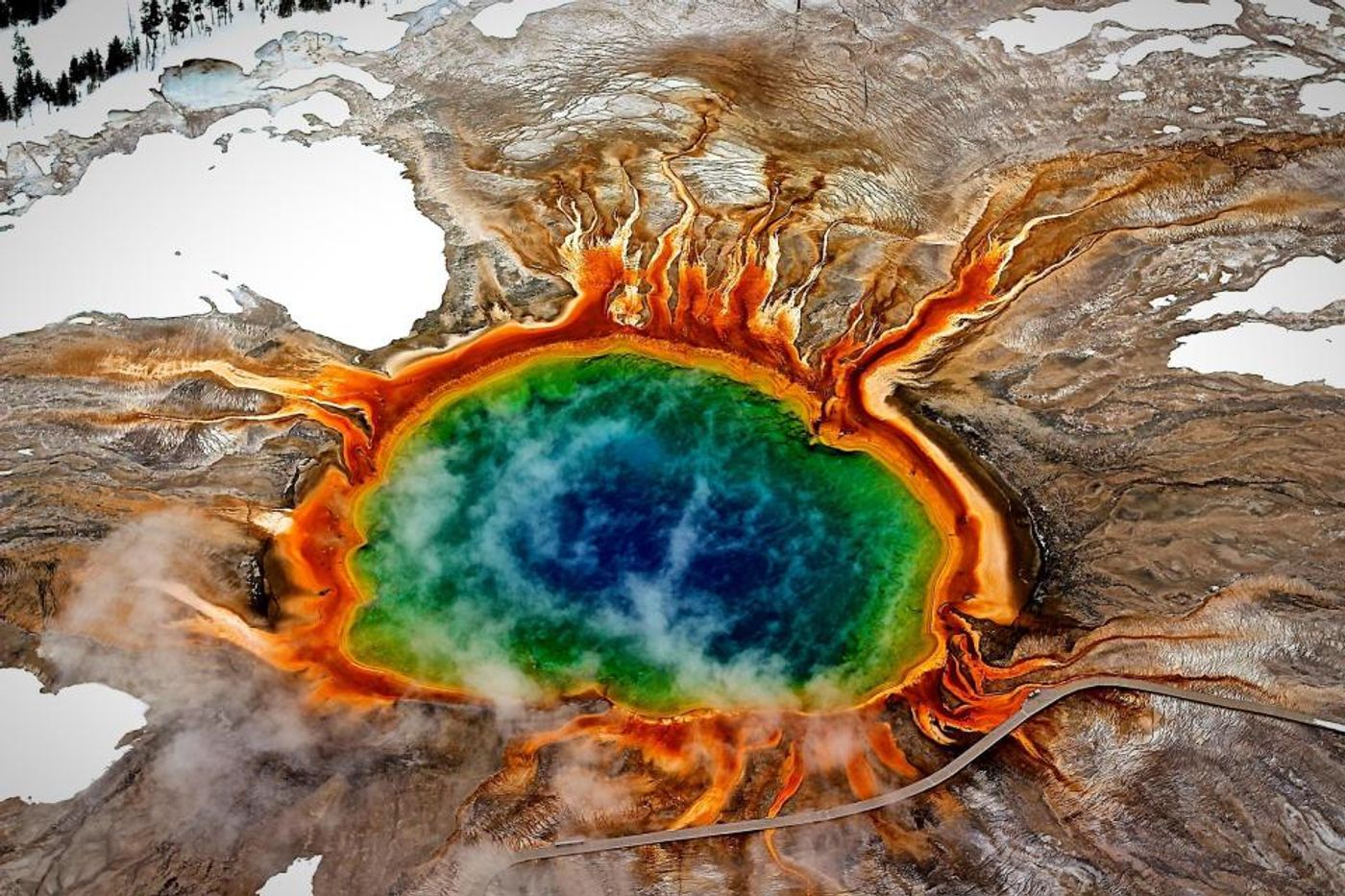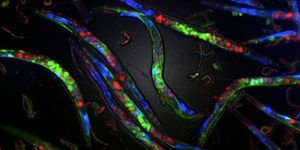What's the deal with Yellowstone's supervolcano?
You may have seen some news out about the Yellowstone supervolcano recently, but what’s really going on down in that bubbling magma chamber? Let’s lay it out clearly. The most time-sensitive part of the situation is that it’s been about 600,000 years since the supervolcano that sits beneath Yellowstone last exploded. And geologic history shows that it has a pattern of exploding roughly every 600,000 years. That means we’re about due for a huge eruption, and that is terrifying.
When a supervolcano explodes, it is about 1,000 times stronger than a normal volcano and so much ash goes into the atmosphere that the planet is usually sent into a volcanic winter. This means that many animals and plants die, crops cannot grow, and temperatures plummet for a prolonged time. Starvation is a real possibility under these circumstances, especially considering an estimate from the UN in 2012 that food reserves worldwide would last a mere 74 days. Furthermore, if Yellowstone’s supervolcano erupted, in a matter of seconds the Western part of the US would be demolished, leaving people stranded and evoking a mass migration into the already crowded Eastern states. That’s obviously something we would like to avoid.
So, in response to this several scientists from NASA have come up with a plan that could stave off this inevitable eruption, making it potentially less, well, inevitable. The plan involves letting heat out of the supervolcano magma chamber slowly with complicated engineering techniques. But that task is an unthinkably large challenge, and the whole process may take hundreds or even thousands of years to even begin to see results – that’s why scientists are urging us to start now, despite the project’s estimated $3.46 billion cost. Here’s how it works.
If we were to drill up to 10km down into the supervolcano and pump in water at a high pressure, the circulating water would return at a temperature of around 662 degrees Fahrenheit. This process would hence very slowly extract heat from the volcano. And as another draw, it could also be used to generate thermal energy.
“Yellowstone currently leaks around 6GW in heat,” says Brian Wilcox from Nasa’s Jet Propulsion Laboratory. “Through drilling in this way, it could be used to create a geothermal plant, which generates electric power at extremely competitive prices of around $0.10/kWh. You would have to give the geothermal companies incentives to drill somewhat deeper and use hotter water than they usually would, but you would pay back your initial investment, and get electricity which can power the surrounding area for a period of potentially tens of thousands of years. And the long-term benefit is that you prevent a future supervolcano eruption which would devastate humanity.”
Of course, when drilling into a giant volcano with the intent of preventing an eruption, it would be quite a travesty if said drilling were to actually spur an explosion. So instead of drilling into the top of the magma chamber, the scientists suggest drilling from the lower sides of the volcano around the borders of Yellowstone National Park in order to extract heat from underneath the chamber. “This way you’re preventing the heat coming up from below from ever reaching the top of the chamber which is where the real threat arises,” Wilcox says.
Another aspect of recent news regarding Yellowstone’s supervolcano is the lithium deposits that scientists from Stanford and the US Geological Survey have discovered. Lithium is important because it is the metal we use to manufacture rechargeable batteries for things like phones, laptops, and cameras. And now, as electric vehicles are becoming more popular, the demand for lithium is outgrowing the supply.
The study, which was published in the journal Nature Communications, explains that when supervolcanoes erupt, they collapse into huge basin-like formations called calderas which often fill water to become crater lakes. Supervolcanoes, the team says, can hold lithium deposits because of the lithium-enriched magmas that formed them. And over years, lithium leaks out of the volcanic deposits and accumulates in the caldera lake and surrounding sediments. Extracting this lithium could act to “diversify the global lithium supply chain,” writes the study.
As of now the only lithium reserves are in Chile and Australia and are extracted from brines, pegmatites, and sedimentary rocks. Mining lithium from North America’s supervolcanoes (not only Yellowstone but also Crater Lake, Long Valley, and Valles Caldera) could mean a huge source of revenue and a push toward more renewable energy sources. But how exactly do we get the lithium out without waking the sleeping giant? That’s a question that has yet to be answered.
And just to add a cherry on top of a perilous magma chamber, in the last two months roughly 1400 earthquake tremors have been recorded in the Yellowstone area and scientists are concerned that such seismic activity might trigger an even bigger concern, if you get my gist.
So yes, the news regarding North American’s supervolcanoes and Yellowstone’s, in particular, is convoluted, and frankly a bit scary. But the reassuring part is that our scientists are on it like ash is on Earth after a supervolcanic eruption. Oops, bad joke?
Sources: BBC, Raw Story, Nature, Daily Mail UK









